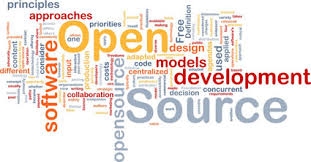Open Source Software and Technology Basics By John Pereless

Open source software is just a software like others. it is differentiated by its License, patent or terms of use & services, which assures some freedoms, in contrast to a sole ownership. Proprietary software i.e. a privately held property which restricts these rights. Open source software guarantees the right & order to access and modifies the source code, and to use, reuse and redistribute the software, all with free from all costs.
Open source technology can be an often-misused term; too generally, users often think open source is identical with no cost. With the relatively recent climb on the Internet’s influence on creation and development of application, open source has turn into a popular vehicle to attain widespread use and support of some quite popular software titles. In this informative article, we'll discuss a meaning of open source technology and its relationship with software such as Linux operating system.
In a few cases, there may be an constraint to share enhancement or betterment with the wider community, thus assuring global benefit.
These, meaningfully simple guarantees & have powerful implications such as:
(A) They encourage the software reuse
(B) Triggers innovation, ideology, concept & flexibility
(C) Ease of integration
(D) Decrease the monopoly in terms of operating and using the features.
(E) No vendor specific or service oriented monopoly means no reason to hide defects and security loopholes.
(F) No single-vendor access means diversity of support and services.
(G) Sometimes competition leads to customer benefit
(H) Lower hurdles in use and making an entry in app world that boosts involvements.
In all, an open source software is licensed under some terms and they are:
1. Software use freely, within the terms of the licence
applied [As we discussed above]
2. Condition on viewing the source code [If a community don’t want to share the code, that’s certain if they wish to do so ]
3. If you want to improve the source code or you want to add some additional features as per the license, you must share those with the community as well for being published the changes.
4. Distribute the source code [As per the norms and terms applied in the license].
The Open Source Initiative (OSI) [ An organization dedicated to promoting open-source software. The organization was founded in February 1998, by Bruce Perens & Eric S. Raymond, prompted by Netscape] maintains the Open Source Definition (OSD), and is recognised globally as the authority on certifying whether a license is truly open source or not.
Some most commonly used open source Licenses are:
a. GPL [General Public Licence] version 3, and version 2 is still widely used
b. GNU Lesser General Public Licence (LGPL)
c. BSD Licence
d. Mozilla Public Licence (MPL)
e. Apache Licence
Open Source Technologies:
Open source technology [OST] can be defined as the application implementation paradigm that permitting the end users & developers to not only access the source code of program, but make changes in that as well. The Unix based Linux OS is a one of the best examples of OSS technology.
The most widely used open source technology and platform these days is: LAMP which is a combination of different sets of open source technological segments. L in LAMP stands for Linux [A server that manages the instructions/requests/responses from remote side queries]. A is for Apache which is again an open source [A licence under which these operates], M for MySQL which is an open source database management System [ODBMS] and P stands for PHP [Hyper text preprocessor - A programming language to write the piece of code or say software].
